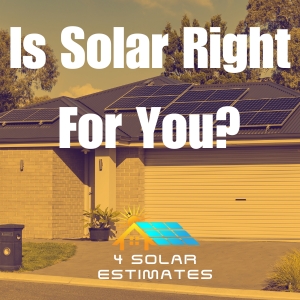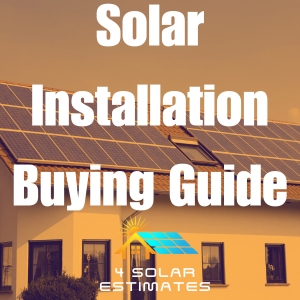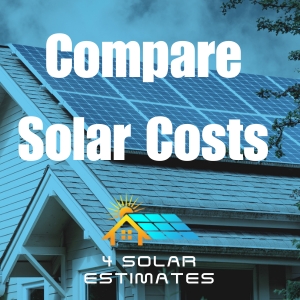
Cut the Cost of Solar Panels With 5 Expert Tips
Investing in solar panels is a significant decision that promises long-term savings on energy bills and a lower carbon footprint. However, the initial cost can be daunting for many homeowners. Fortunately, there are strategies to make solar energy more affordable and accessible. Here are five expert tips to help you cut the costs of installing solar panels and maximize your investment.
1. Research Available Incentives and Rebates
Investing in solar energy becomes significantly more affordable when you take advantage of various incentives and rebates. These financial supports are designed to encourage homeowners to adopt renewable energy by reducing the upfront and overall costs. Understanding the types of incentives available, where to find them, and how to apply them can drastically cut your initial investment in solar panels. Let’s take a look at some of the most common incentives available to you:
Federal Investment Tax Credit (ITC)
The Federal Investment Tax Credit, often referred to as the solar tax credit, allows you to deduct a percentage of the cost of installing a solar energy system from your federal taxes. This incentive has made solar power accessible to more homeowners by reducing the net cost substantially.
State and Local Incentives
Many states and municipalities offer additional incentives for solar energy installation. These can include state tax credits, cash rebates, and property tax exemptions. Since these vary widely depending on your location, it’s crucial to research what’s available in your area.
Renewable Energy Certificates (RECs)
Some states have markets for Renewable Energy Certificates, which you can earn by generating solar energy. These certificates can then be sold on the market, providing an ongoing income stream to offset the cost of your system.

How to Leverage Incentives:
- Federal Solar Investment Tax Credit (ITC): This federal incentive allows you to deduct a significant percentage of the cost of installing solar panels from your federal taxes. The percentage has varied over the years, so check the current rate.
- State and Local Incentives: Many states, cities, and utilities offer additional incentives that can further reduce costs. These may include tax breaks, rebates, and grants.
- Net Metering: Some local utilities offer net metering, which allows you to sell excess power your solar panels generate back to the grid, offsetting the cost of power you draw on less sunny days.
Additionally, it is important to explore rebate programs and the benefits they may offer:
Utility Rebates
Many local utility companies offer rebates for installing solar panels as part of their commitment to increasing the proportion of renewables in their energy mix. These rebates can significantly lower the upfront cost of installation.
Manufacturer Rebates
Occasionally, manufacturers of solar panels and related equipment offer rebates to reduce the cost of their products. These rebates can be seasonal or part of promotional campaigns to encourage quick adoption.
How to Apply Solar Incentives and Rebates
Research and Documentation
Start by visiting websites such as the Database of State Incentives for Renewables & Efficiency (DSIRE), which provides a comprehensive list of incentives and rebates available in the United States. Gather all the necessary documentation, such as sales receipts or proof of residence, as many incentives require you to submit these with your application.
Consult with Professionals
When you’re ready to install your solar panels, it’s wise to consult with a tax professional or a solar financial analyst. They can help ensure you’re applying for all available incentives correctly and can advise you on how to maximize your benefits.
Apply Early
Some incentives and rebates have limited funds and are provided on a first-come, first-served basis. Make sure to apply as early as possible to secure your rebate or incentive. Additionally, keep in mind that some programs may have deadlines by which you need to install your solar panels to qualify.
Keep Up with Policy Changes
Solar incentives and rebates can change based on legislative updates. Keeping informed about these changes can help you make the most of the financial supports available and plan your investments accordingly.

2. Choose the Right Solar Panel System
Selecting the appropriate solar panel system is essential to ensure that it meets your energy needs effectively and efficiently. Solar technology has advanced significantly over the years, offering various options that can be tailored to different home types, energy requirements, and climatic conditions. Understanding the different types of solar panel systems and their suitability for various environments will help you make an informed decision.
Types of Solar Panel Systems
- Monocrystalline Solar Panels: Monocrystalline solar panels are made from a single, continuous crystal structure. These panels are known for their black color and rounded edges. They are highly efficient in converting sunlight into electricity and have a higher power output per square foot.
- Polycrystalline Solar Panels: Polycrystalline panels are made from multiple crystals of silicon melted together. These panels have a blue, speckled appearance and do not have the rounded edges like monocrystalline panels.
- Thin-Film Solar Panels: Thin-film panels are made by layering thin sheets of photovoltaic material onto a base. They are lightweight and flexible, with a lower efficiency rating compared to crystalline silicon panels.
- Bifacial Solar Panels: Bifacial solar panels can capture sunlight from both the front and back sides, increasing total energy generation. They are typically made using monocrystalline silicon.
Considerations for Choosing the Right System
Energy Needs
Calculate your household’s average energy consumption. Understanding your energy usage patterns will help determine how many panels you need and what type of system would be most cost-effective over time.
Roof Compatibility
Consider your roof’s size, shape, and orientation. North-facing roofs (in the northern hemisphere) that receive ample sunlight are ideal for solar installations. Ensure your roof can support the weight of the system you choose, or consider alternatives like ground-mounted systems.
Aesthetic Preferences
Solar panels are a visible addition to your home. Choose panels that you find visually pleasing and that complement the style of your home, especially if aesthetics are a priority for you.
Budget
Finally, balance all the above factors with your budget. While higher efficiency panels like monocrystalline might be more expensive, their longer lifespan and better performance might provide greater savings in the long run.
Selecting the right solar panel system involves a careful consideration of your home’s location, energy needs, roof characteristics, and budget. By understanding the different types of solar panels and their specific advantages, you can choose a system that not only cuts down on your energy bills but also fits well with your home’s aesthetics and environmental conditions.

3. Consider Financing Options
If paying the full price upfront is daunting, numerous financing options can help make solar panels more accessible.
Financing Solar:
- Solar Loans: Many companies offer solar loans, which allow you to finance the purchase and installation of your solar panels over a period of time. Compare interest rates and terms to find the best deal.
- Solar Leases/Power Purchase Agreements (PPAs): With these arrangements, you don’t own the solar panels. Instead, you lease them or agree to purchase the power they generate at a reduced rate. While you won’t benefit from incentives, you also won’t have to pay for maintenance.
- Home Equity Loans: If you have equity in your home, a home equity loan can provide low-interest financing for your solar panels.
4. Optimize Your Home’s Energy Efficiency
Before installation, ensuring your home is energy-efficient can reduce the size and cost of the solar panel system needed to power your home. Less energy use means fewer panels and lower costs.
Boosting Home Efficiency:
- Energy Audit: Conduct a home energy audit to identify areas where you can improve efficiency, such as upgrading insulation, sealing leaks, and using energy-efficient appliances.
- Behavioral Changes: Simple changes like turning off lights when not in use, using a programmable thermostat, and reducing water heater temperature can lower your overall energy consumption.

5. Get Multiple Quotes
Solar panel costs can vary significantly between providers. It’s advisable to get quotes from multiple certified installers to ensure you get the best price and service.
Shopping Around:
- Compare Quotes: Look not just at the costs but also at what’s included. Ensure quotes cover the same services and materials so you can make a fair comparison.
- Check Reviews and References: Research potential installers’ reputations, customer reviews, and ask for references. Choose a provider with a strong track record.
Solar panels are a worthwhile investment that not only reduces your energy bills but also contributes to a healthier planet. By taking advantage of rebates, selecting the right system, exploring financing options, improving home efficiency, and shopping around, you can make solar power a more affordable and wise investment for your home. With careful planning and these expert tips, you can maximize the benefits of solar energy while keeping costs in check.

Leave a Reply